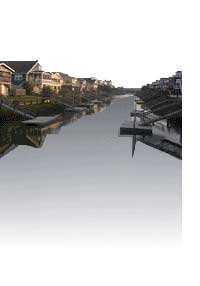|
SAN ILDEFONSO PARISH
TANAY, RIZAL
1606-2006
Formerly
a visita of Pililla and located in the foothills of the Sierra Madre, Tanay became independent from Pililla in 1606. The town
was transferred to a site called San Antonio in 1620 and then to the site it
presently occupies in 1640; the transfer was probably catalyzed by the Chinese uprising of 1639, when many Chinese sought
refuge in the Sierra Madre. In 1680 a church and convento were built of stone. But by 1773, both were in such state of deterioration that Fr. Ildefonso Fetanes has
older structures demolished and new ones built. The present church and convento
were built from 1773-1783. Both structure were repaired and improved in 1851
by Fr. Antonio Santiago.
Heritage Features:
Typical
of Franciscan mission architecture, the church and convento from one complex, the convento being built around an atrium to
one side of the nave. The church planned as a cruciform has short transepts. The church fabric is made of dark gray adobe.
The common place plan of the fašade is tastefully decorated with bas reliefs of angels and saints. A side door is likewise
decorated. The high point, however, of the church are the Rococo altars. Rococo, a more attenuated though busier form of Baroque, was in vogue in the 1780s. it is characterized by the use of pastel colors, asymmetrical frames, flames and coral
like finials and decorations. The tabernacle of the main altar has a semi-circular
door that runs along a groove. A tabernacle of similar design is found in the
Mision Dolores museum, in San Francisco, USA. The tabernacle is labeled as coming from the Philippines. Fr. Junipero Serra who founded the California mission in the 18th century wrote to the Franciscans in the Philippines asking for donations of
church appurtenances for the newly founded missions in the West Coast. The Franciscans
of Laguna responded to his request.
Other
features of note are a wooden replica of a silver tabernacle, stolen from the church in the 1970s. The Nuestra Senora de Dolores
on a side altar, and the pulpit, also in Rococo. The Station of the Cross are
attributed to an anonymous “Maestro de Tanay.” Closer examination
of the Stations, done in high relief, reveals that the 13th and 14th stations may have come from another
hand. The Stations contain anachronistic elements, for instance a Pharisee wearing
glasses, cityscapes resembling a Spanish colonial city, women dressed in 18th century attire. |
